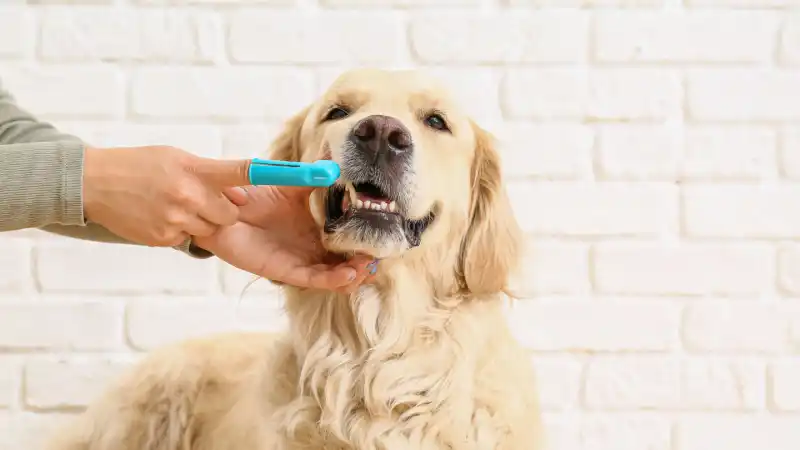Tips for Flying With Your Dog
Learn tips on finding a dog-friendly airline, how to fly with your dog on a plane, and what you'll need to pack to make dog airline travel easy and stress-free.

You have a big trip coming up and driving cross country with your dog just won’t cut it this time. Is flying with your dog in the cabin a feasible option? Thousands of people fly with pets every year, and airlines are becoming more accommodating than ever before. With a little preparation for you and your dog, flying is possible, and it doesn’t have to be an ordeal!
Let's walk through a few of the steps you'll need to familiarize yourself with in order to know how to fly with your dog on a plane.
Choosing Your Flight: Is There a Dog Friendly Airline?
Every airline has its own rules regarding the number of pets allowed in the cabin on each flight. Be sure to check your airline’s website for the list of rules and requirements about flying with your dog and contact the airline with any questions you may have ahead of time.
Some questions to consider before dog airline travel are:
Can I fly with my dog if they weigh more than 30 pounds?
Does your airline have any requirements for flying with my dog outside of the normal legal regulations?
Can I reserve a seat closer to the aisle to make air travel easier for me and my pet?
Are there any additional costs associated with having my dog onboard?
You may also want to schedule yourself on a flight that is less likely to be fully booked. Flights with fewer passengers are easier for traveling with a pet, and you'll want to create as little stress as possible for yourself and your dog.
Still wondering about rules regarding dog height and weight, crate size, and breed restrictions. The BringFido website has a handy guide that addresses many of the major U.S. airlines’ pet policies.
Booking Your Flight
Make your reservations as early as possible, as many airlines have rules regarding the number of dogs allowed in the cabin on each flight. You should call the airline to make your reservation --- this ensures that your dog has a reserved spot on the plane and that all of your questions are answered ahead of time.
If you are scheduling a round trip flight, be sure to tell the airline you will have your pup on BOTH legs of the trip. Expect to pay a fee for having your dog fly with you; fees generally range from $95-$125 each way. However, these fees can be reduced or even eliminated if your dog is an emotional support animal or service dog. If possible, book nonstop flights, as a long day of travel with limited access to comfortable doggy bathrooms and confinement to a carrier are not in the best interest of your pet.
Health Certificates: The Great Debate
Depending on who you ask, you’ll receive differing answers about whether a health certificate is required to fly. Some people report having to show their certificate when checking in, while others say they were never even asked for a certificate. So be aware and be prepared,because most airlines require that you have a health certificate completed with proof that your dog is up to date on their rabies vaccinations.
Health certificates are required to be issued within 10 days of your trip and generally cost less than $35. Visiting the veterinarian before a flight is important to ensure your dog is healthy for travel. Dogs should be at least 8 weeks of age before taken on a flight.
Sedating Your Dog
The American Veterinary Medical Association states that in most cases dogs should not be given sedatives when flying as they can increase the likelihood of respiratory and cardiovascular problems. If your dog is prone to anxiety, you can speak with your veterinarian during your pre-flight visit to determine if sedatives would be the safest option for your dog.
Approved Travel Carriers
Your dog will have to travel inside an approved carrier during their time in most terminals and for the duration of the flight in most cases. Airlines will tell you the appropriate dimensions of the carriers that will be allowed for use on the plane. These dimensions are based on what size carrier will fit under the seat, so trying to sneak in an extra inch is not advisable.
Choosing a Travel Carrier
When choosing a dog carrier, make sure that your pup fits comfortably. Keep an eye out for carriers that offer small pockets for storing items such as your pet-fee receipt, health certificate, and a small baggy of food. Packing everything you need for your pup can help make the trip more manageable. Remember, this will count as your carry-on bag, so having the option to store some personal items in the side might be helpful to you.
Travel Carrier Tips
You may want to line the base of your dog carrier with blankets or absorbent materials in case your dog has an accident. Remember to also attach identification information to the carrier so you can easily be reunited with your dog should something happen.
Getting your dog accustomed to traveling in their carrier before a flight can help reduce stress on your trip. Take your dog on a few outings where they have to ride in the carrier, so they associate it with a fun adventure.
Take some of the stress out of pet ownership with Accident & Illness Coverage from AKC Pet Insurance (underwritten by Independence American Insurance Company). Our pet insurance plans are designed to be there when you need them, allowing you to focus more on the health of your pet and less on costly veterinary bills. Click here for a quote today!

Mary comes to AKC Pet Insurance with an extensive background in animal care. As a lifelong animal lover, she has a passion for promoting pet health and wellness. Mary lives in Kentucky with her orange kitty, "Cat" and her dog, " Wubbi".
READ MORE ARTICLES

